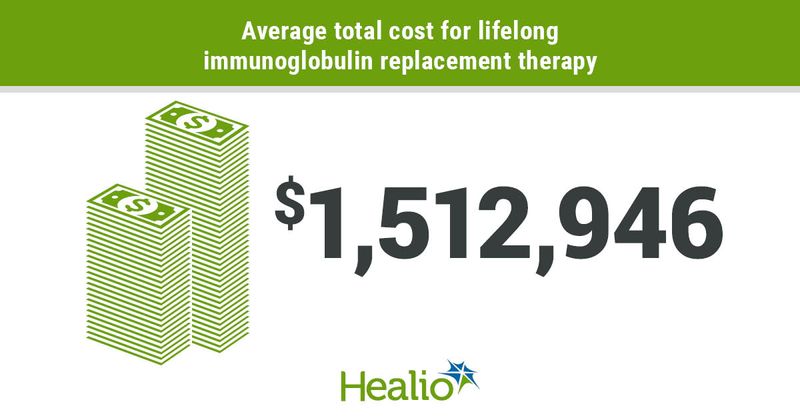Safest treatment for immune disorder not cost-effective, study finds
A study published in JAMA Pediatrics found that the most common treatment for patients with a rare immune disorder will ultimately result in a reduced quality of life and a major financial burden for patients.
The study examined congenital agammaglobulinemia, which comprises a group of primary antibody deficiencies characterized by a scarcity or complete lack of B cells, leading to recurrent infections and potentially life-threatening complications, according to a press release.

In the U.S., the most common treatment for the disorder is lifelong immunoglobulin replacement therapy (IRT), given intravenously once a month or as a subcutaneous infusion once or twice weekly. Although effective at reducing infections, it does not completely prevent them, and researchers found that the financial burden cost patients between $30,000 and $90,000 per year.
“The model we developed allowed us to answer questions about cost-effectiveness and outcomes for a patient population that is typically too small to power the robust clinical trials needed to answer these questions,” Di Sun, MD, MPH, an attending physician in the division of allergy and immunology at the hospital, said in the release. “Given the results of our modeling, we believe that IRT should remain available to treat patients with agammaglobulinemia in the U.S., but regulatory efforts should focus on reducing its price.”
Sun and colleagues built a computational model using a base-case scenario of a 1-year-old child with congenital agammaglobulinemia in the U.S. receiving either lifelong IRT, matched sibling donor hematopoietic stem cell transplant (HSCT) or matched unrelated donor HSCT. With the known costs, probabilities and quality-of-life measures derived from literature, the researchers used their model to simulate more than 10,000 patients over a 100-year period.
The findings found that lifelong IRT decreased premature deaths by 37% compared with HSCT, but because of its high cost, was not cost-effective compared with HSCT, and further the increase in lifespan due to IRT was not accompanied by a commensurate increase in quality of life.
The researchers ultimately concluded that the high cost of IRT in the U.S. undermines its cost-utility, particularly when compared with Canada and European countries, where the cost of IRT is nearly a third of what it is in the U.S.
“As a treatment, IRT is an especially good option for older patients and those without suitable donor sources, but our study shows the exorbitant cost for patients in the United States prevents it from being a cost-effective option here,” Neil D. Romberg, MD, an attending physician in the division of allergy and immunology at the hospital, said in the release. “Until additional treatment options become available, such as gene-based therapies, our findings suggest that reducing IRT cost in the U.S. is an immediately actionable intervention that would make IRT the more cost-effective strategy compared with HSCT.”
Reference:
CHOP study finds safest treatment for immunodeficiency disorder is not cost effective for US patients. https://www.eurekalert.org/news-releases/934675? Published Nov. 16, 2021. Accessed Nov. 17, 2021.
